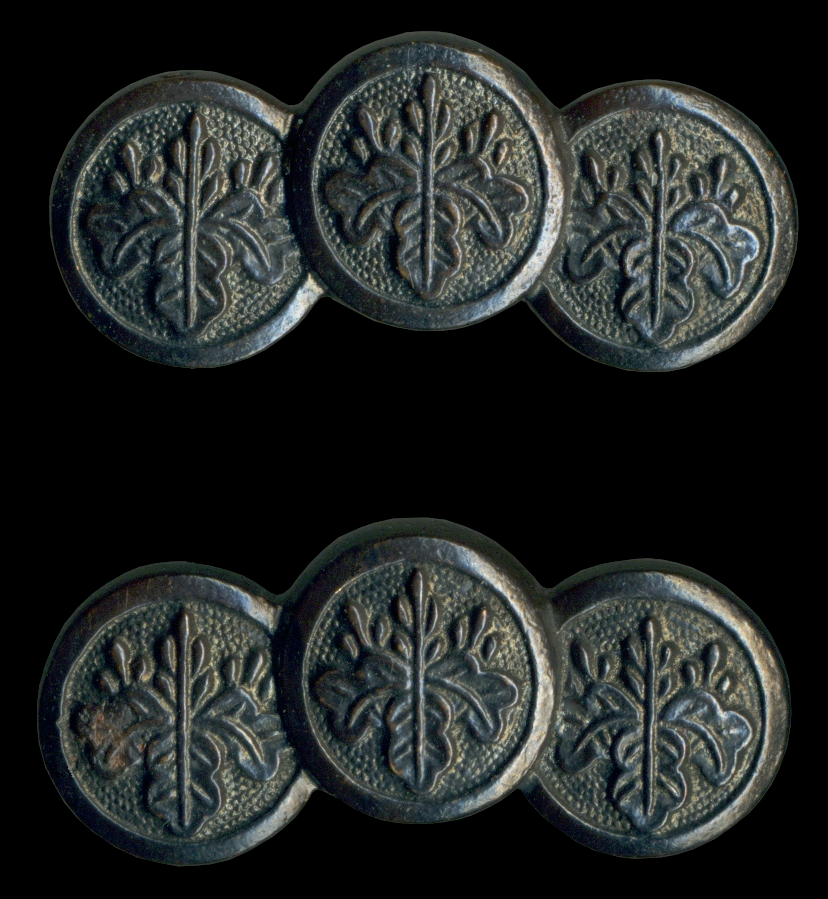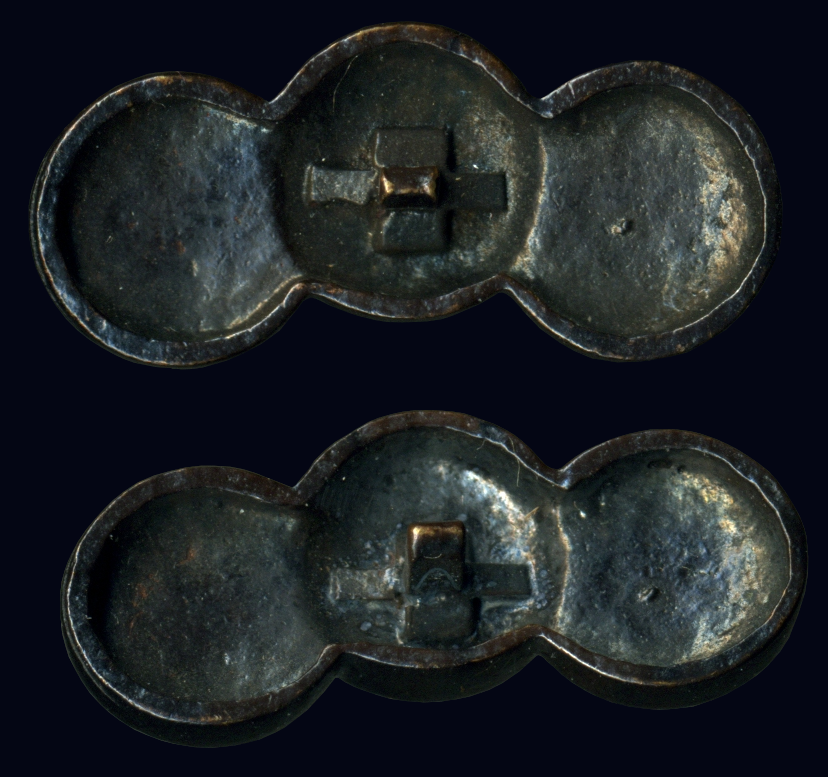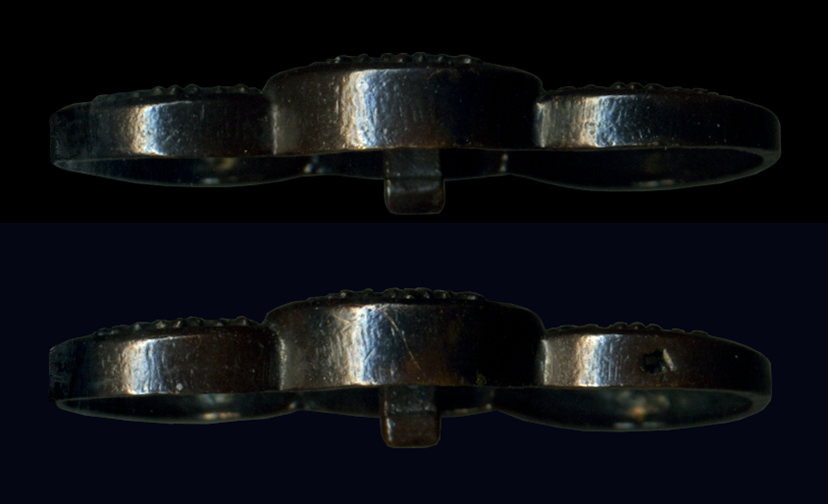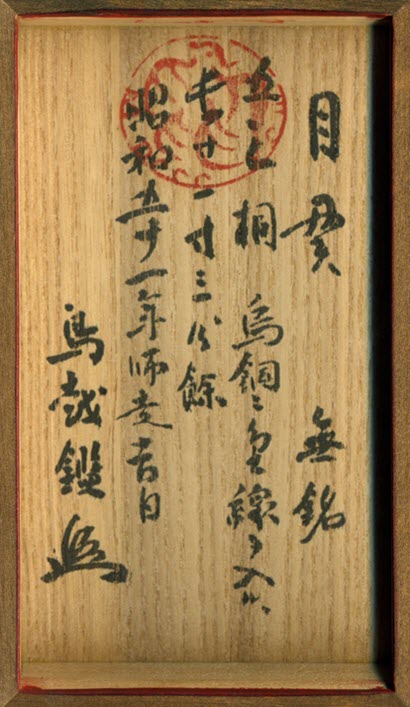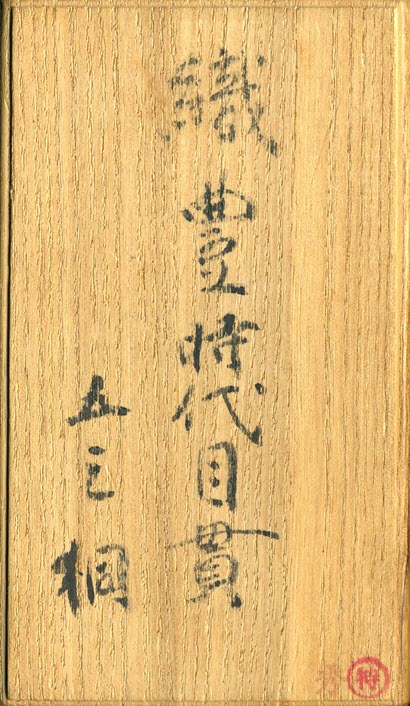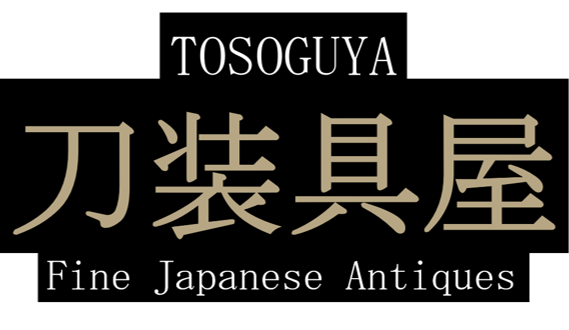

Very nice set of unsigned black shakudo (烏銅) menuki (目貫) with 3 Paulownia crests (Kiri-mon 桐紋) of go-san-kiri (五三桐) style. This set comes with an attestation (hakogaki 箱書) on the storage box by Dr. Torigoye Kazutaro, one of the foremost tosogu scholars. The scans below came out too brown. In hand, the menuki are a glossy black, as described by Torigoye.
Go-san-kiri refers to the arrangement of flower buds above the leaves of the crest, in 3-5-3 order. The motif sets on a field of fine nanako (魚子). The menuki are not mass-produced, cast pieces. Rather, they were handmade by a high-relief carving technique called takabori (高彫), which involves first hammering out from the back, called uchidashi (打出), and finished by low relief carving and punching of the nanako from the front. One final interesting point... there is single square hole punched through the side of one of the menuki (you can see it in the lowest photo, on the right). This was done and left on purpose, as a makers mark. In his attestation, Torigoye indicates this is a high quality item. Great menuki, with age, and a hakogaki for a very reasonable price.
Torigoye attributes these menuki to the time spanning the times of dominion of the first two unifiers of Japan; Oda Nobunaga and Toyotomi Hideyoshi. It is informally referred to as the Shokuhō period (織豊時代), and is derived from an alternate pronounciation of name characters: Shoku (織) for Oda (織田) plus Hō (豊) for Toyotomi (豊臣). Formally, this period is referred to as Azuchi-Momoyama, derived from the names of their respective castles.
Hakogaki by Dr. Torigoye Kazutaro (鳥越一太郎)
Measurements: 3.2cm x 1.4cm x 0.5cm
Azuchi Momoyama Period (安土桃山時代), ~1568 - 1600
SOLD
